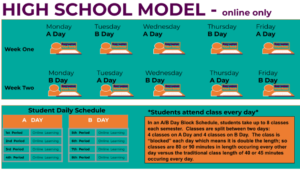Leadership Challenge: Execution & Innovation
Over the next decade education will migrate from print-centric batch-processing to personal digital learning services (see www.disruptingclass.com). This transition will result from a combination of rapid growth new virtual and hybrid (online/onsite) schools and traditional schools adopting more online learning. The paradox of leadership during this transition is execution and innovation.
Execution is performance management of the current system toward improved outcomes. It requires setting goals, measuring progress, and coaching for improved performance. The Dell Foundation has made performance management central to their education investment. The first task of improved execution is measuring the right things. And that’s likely to include introducing new metrics and measurement routines. Adding any new measurement to a system requires learning opportunities for stakeholders to expand understanding of cause and effect related to outcomes.
Innovation is changing the current system or designing a new system to produce better outcomes. Innovation starts with a reason for change–what needs to be different or better? Next comes a clear and shared picture of a desired future state. A theory of change explains the series of events likely to create the desired future. A well developed plan identifies and helps coordinate necessary resources. The Bridgespan Group has helped dozens of school districts and education serving non-profits create an effective innovation scaling strategy.
Education leaders must be competent in both execution and innovation but typically receive training in neither. Leaders must first have the context grounded judgment to understand the balance of execution and innovation required by their current circumstances. Execution and innovation both require political capital, something that leaders must accumulate from stakeholders and spend wisely. Strategic partners can play two important roles in helping edu-orgs improve execution and innovate:
· Naming and framing the challenges and defining the requisite balance of execution and innovation. Done well and broadly, naming and framing can create political capital for organizational leaders
· Creating learning opportunities and tools for stakeholders around the challenges. A variety of communication tools including focus groups, targeted interviews, social networks can launch the dialog
Get some help meeting your challenge. The right partners will help you execute and innovate.








Joannah
I recently came across your blog and have been reading along. I thought I would leave my first comment. I don't know what to say except that I have enjoyed reading. Nice blog. I will keep visiting this blog very often.
Joannah
http://2gbmemory.net